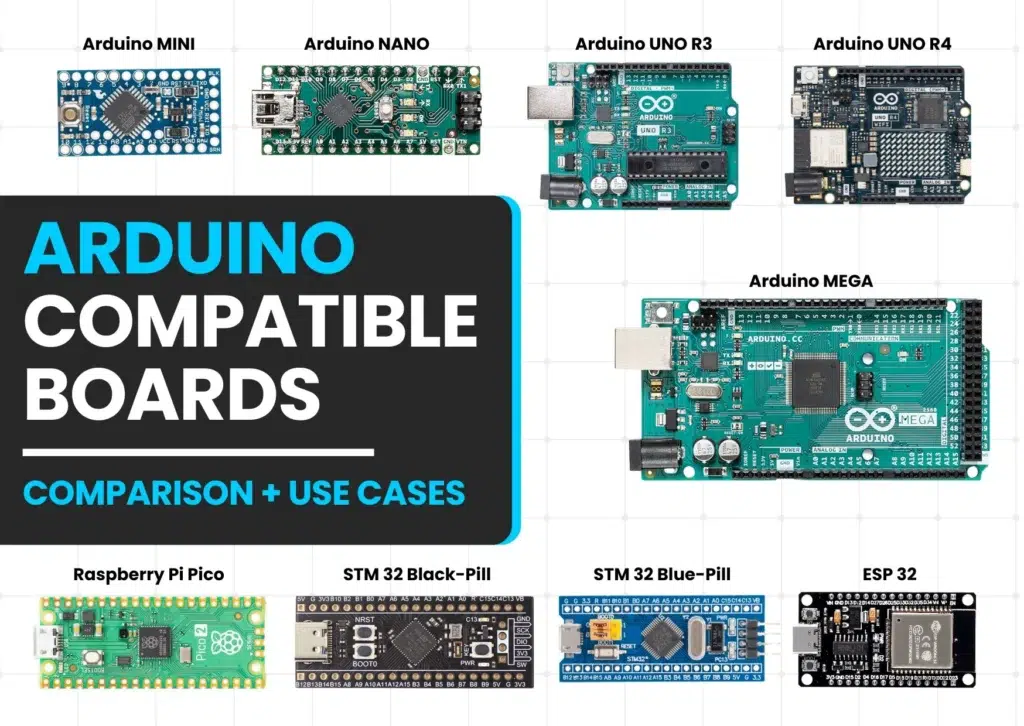Exciting Introduction to Arduino: A Beginner’s Guide (2025 Edition)

Introduction to Arduino: A Beginner’s Guide
Arduino has revolutionized the world of electronics and programming, making it easier for beginners and professionals alike to create innovative projects. Whether you want to automate your home, build a robot, or design a smart gadget, Arduino provides an accessible platform to bring ideas to life. In this guide, we’ll introduce you to Arduino, its features, and how you can get started with it today. If you’re new to electronics, this Introduction to Arduino: A Beginner’s Guide will help you take your first step into the world of DIY tech.
What is Arduino?

Arduino is an open-source electronics platform that consists of both hardware (Arduino boards) and software (Arduino IDE). It allows users to write code and upload it to microcontrollers, enabling them to interact with sensors, motors, LEDs, and other electronic components. This introduction to Arduino will help you understand its fundamentals and practical applications.
A Brief History of Arduino
Arduino originated in 2005 in Ivrea, Italy, as a project for students without a background in electronics and programming. It was created by Massimo Banzi and his colleagues with the aim to provide an affordable and easy-to-use microcontroller board for educational purposes. Since then, it has grown into a global phenomenon.
Why Choose Arduino?
- Easy to Use: Arduino is beginner-friendly, with a simple programming environment.
- Affordable: Most Arduino boards are budget-friendly.
- Extensive Community Support: A vast global community provides tutorials, forums, and troubleshooting help.
- Open-Source: The hardware and software are open-source, allowing for customization and improvement.
This Arduino beginner’s guide will walk you through choosing the right board, setting up the IDE, and writing your first code.
Getting Started with Arduino
1. Choosing an Arduino Board
The most popular board for beginners is the Arduino Uno, featuring an ATmega328P microcontroller, digital and analog I/O pins, and a USB interface for programming. Other options include Arduino Mega, Nano, and Due, each catering to different project requirements.
2. Setting Up the Arduino IDE
To program an Arduino board, you need the Arduino IDE, which is free and available for Windows, macOS, and Linux. Download it from the official Arduino website and install it on your computer.
3. Writing and Uploading Your First Arduino Code
Once the Arduino IDE is installed:
- Connect your Arduino board to your computer via USB.
- Open the Arduino IDE and write your first program (commonly known as Blink):
void setup() {
pinMode(13, OUTPUT);
}
void loop() {
digitalWrite(13, HIGH);
delay(1000);
digitalWrite(13, LOW);
delay(1000);
}
- Click the Upload button to transfer the code to the board.
- If everything is correct, the onboard LED will start blinking!
Installing Drivers and Troubleshooting
Some boards may require additional drivers. If your upload fails, ensure the correct board and COM port are selected under the “Tools” menu.
Common Components Used with Arduino
- Breadboard
- LEDs
- Resistors
- Push Buttons
- Sensors (e.g., temperature, ultrasonic)
- Servo Motors
These components are often included in Arduino starter kits and are essential for your first few projects.
Best Open-Source Resources for Learning Arduino
- Arduino Project Hub – A collection of community-driven Arduino projects.
- Instructables – Step-by-step tutorials and DIY projects.
- GitHub Arduino Repositories – Open-source libraries and code examples.
Beyond the Basics: What’s Next After This Arduino Beginner’s Guide
Once you master the basics, try advanced projects like:
- Smart Home Automation with Arduino – Control lights and appliances using sensors.
- IoT with Arduino – Connect your Arduino to the internet.
- Robotics Using Arduino – Build your first robot with Arduino and motor shields.
Related Topics
- Arduino Board Types: A Comprehensive Guide to Choosing the Right Board for Your Project
- how to install Arduino IDE
- Ultimate Guide to Mastering Microcontrollers
Conclusion
Arduino is a powerful tool for learning electronics and coding, making it ideal for hobbyists, students, and engineers. With its open-source nature, you have limitless opportunities to explore and innovate. This Introduction to Arduino: A Beginner’s Guide has given you the foundation to start creating exciting projects. Get started today and turn your creative ideas into reality!
🚀 Start Your Arduino Journey Today! Visit Arduino.cc for official resources and updates.











